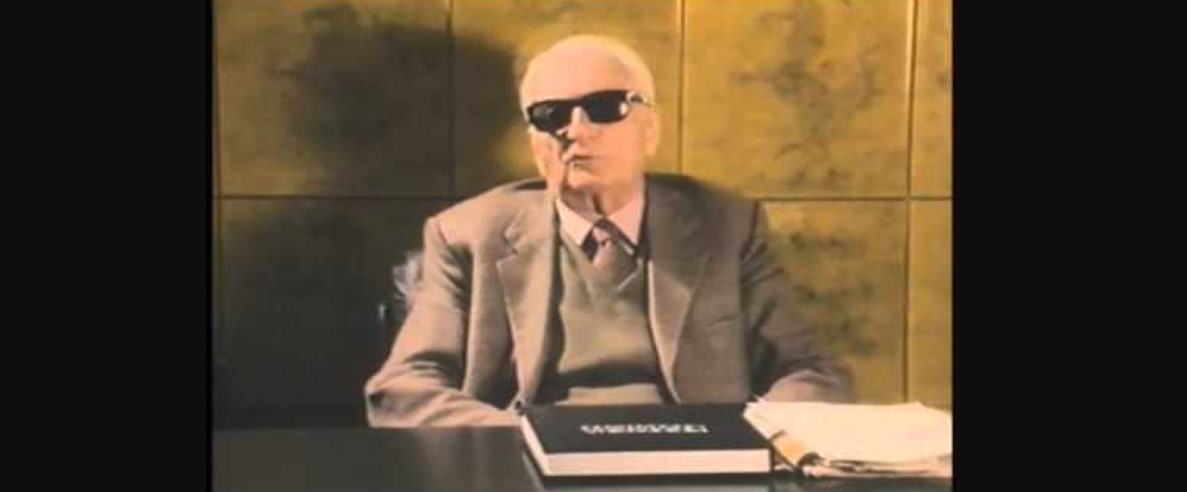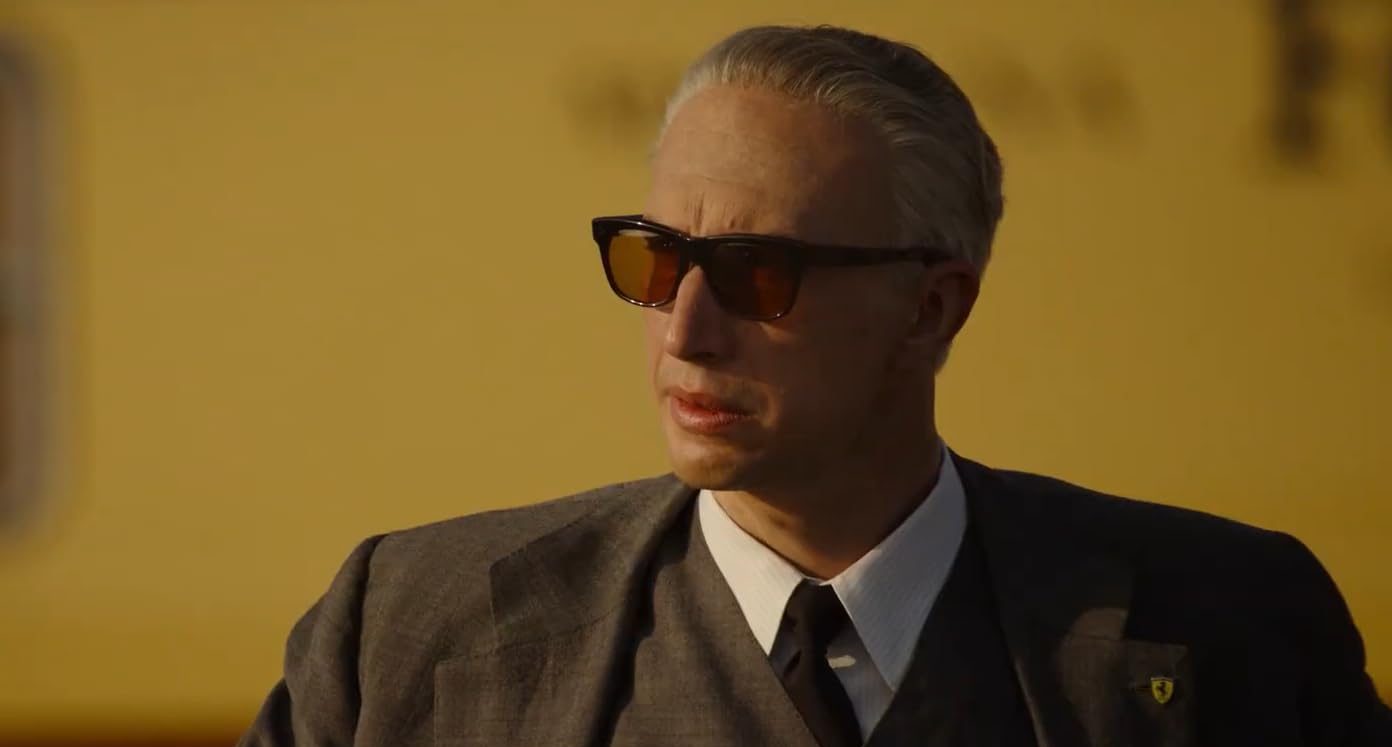In Michael Mann’s ‘Ferrari,’ the story chronicles the ascent of Enzo Ferrari, an illustrious Italian racing driver. Witnessing the zenith of his racing career, Ferrari transitions into retirement only to embark on the ambitious endeavor of establishing a formidable car manufacturing company, steering it to unprecedented heights. Yet, the film’s distinctive allure lies in its meticulous exploration of the protagonist’s personal life, characterized by upheavals and turmoil. Given the palpable essence of the story that is rooted in a semblance of reality, it compels every audience member to ponder its authenticity and whether it is anchored in a true story.
Enzo Ferrari’s Life Shapes the Narrative of Ferrari
Written by Troy Kennedy Martin, ‘Ferrari’ is an authentic portrayal of the remarkable life of Enzo Ferrari based on the threads of Brock Yates’ 1991 biography, a literary piece titled ‘Enzo Ferrari: The Man, the Cars, the Races, the Machine.’ Yates, a seasoned journalist, screenwriter, and the esteemed editor of an influential American Automotive Magazine, Car and Driver, was able to break into the inner sanctum of Ferrari’s world, extracting untold stories from the legendary figure’s life. The resulting book, a testament to Martin’s journalistic prowess, unveiled a tapestry of narratives that had hitherto remained shrouded in mystery.

In discussing the genesis of the film, director Michael Mann revealed that he initiated the script’s development back in the 1990s; however, it did not attain its optimal form at that time. Mann disclosed that he revisited the screenplay periodically over the years, recognizing its incredible narrative potential that demanded expression. Despite facing initial reservations in the U.S. market regarding the reception of racing-themed stories, Mann observed a shift in the landscape, prompting a favorable change in circumstances. He said, “Formula One didn’t get appeal in the US until the last four or five years and it’s totally due to the Netflix show ‘Drive to Survive.’ So, this became the time to do it.”
The resulting film portrays various facets of Enzo Ferrari’s life, a figure born on February 18, 1898, in Modena, Italy, to Alfredo Ferrari and Adalgisa Bisbini. Ferrari, having experienced the loss of his father and brother to illness and having battled his health issues, secured an exemption from military service in Italy during the First World War. Faced with the responsibility of providing for his mother, Ferrari took on the role of a driver for Alfa Romeo in the 1920s, and it was during this period that Ferrari discovered his fervor for the sport, and in 1923, he actively participated in the Grand Prix held in Ravenna on the Savio Circuit.
In the year 1923, Enzo Ferrari entered a new chapter of his life by marrying Laura Garello, a portrayal brilliantly brought to life by Penélope Cruz in the film. The subsequent year marked the pinnacle of Ferrari’s racing career as he secured victory in three Grand Prix events. However, an apparent waning of interest in racing prompted Ferrari to shift his focus. He continued his employment with Alfa Romeo and in 1932, he and Laura celebrated the arrival of their son, Alfredo “Dino” Ferrari. As the allure of racing gradually faded into the background, Ferrari found himself compelled to pursue a more profound purpose.
Enzo’s dreams materialized in 1939 when he established Auto Avio Costruzioni, a car manufacturing company in Modena. Initially focused on supplying parts to other racing teams, the company transformed in 1945 when it officially adopted the name Ferrari. Two years later, in 1947, Ferrari ventured into manufacturing their car, the 125. Despite the setbacks caused by the Second World War, once the wheels were set in motion, the company gained momentum. By 1949, they had expanded their production to include touring cars, which were shipped globally, meeting a soaring demand.
The widespread adoption of Ferrari cars in various races, however, brought forth a series of controversies. Numerous drivers piloting Ferraris were involved in fatal accidents, leading to allegations that the company was culpable for sending drivers on perilous journeys. The situation reached a critical juncture in the aftermath of a tragic incident in which De Portago and his co-driver Edmund Nelson lost their lives, along with nine spectators. Enzo Ferrari, the man behind the company, found himself charged with manslaughter but was later acquitted.
During the tumultuous periods of the 1950s and 1960s, as controversies surrounded Ferrari’s racing endeavors, his personal life also encountered significant stumbling blocks. Tragedy struck in 1956 when his son Dino, a mere 24 years old at the time, met an untimely demise. The loss of Dino took a toll on Ferrari and Laura’s marriage, adding strain to their relationship. The challenging times persisted, and Laura succumbed to the pressures in 1978. It was only after Laura’s passing that Ferrari publicly acknowledged his son, Piero, born to a woman named Lina Lardi in 1945 as divorce was illegal in Italy till 1975.
In a cinematic world obsessed with speed and cars, ‘Ferrari’ distinguishes itself by delving into the human side of Enzo Ferrari’s life, offering a unique perspective on not just him but all the other individuals who shaped the company. After a battle with leukemia, Enzo Ferrari passed away on August 14, 1988, leaving behind a legacy continued by his son Piero, who currently serves as the vice president of the company.
Read More: Where Was Ferrari Shot? Racing Through All Filming Locations


You must be logged in to post a comment.